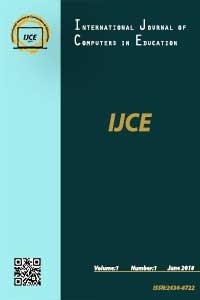Bloom Dijital Taksonomisine Genel Bir Bakış
Bloom, dijital, taksonomi, e-öğrenme, kazanım yazma
An Overview of Bloom's Digital Taxonomy
Bloom, digital, taxonomy, e-learning, achievement writing,
___
- Arabaci, I. B. (2017). Investigation Faculty of Education Students' Cyberloafing Behaviors in Terms of Various Variables. Turkish Online Journal of Educational Technology-TOJET, 16(1), 72-82.Arı, A. (2011). Bloom’un gözden geçirilmiş bilimsel alan taksonomisinin Türkiye’de ve uluslararası alanda kabul görme durumu. Kuram ve Uygulamada Eğitim Bilimleri, (2), 749-772. Anderson, L.W., and D. Krathwohl (Eds.) (2001). A Taxonomy for Learning, Teaching and Assessing: a Revision of Bloom's Taxonomy of Educational Objectives. Longman, New York. Anderson, L. W., & Krathwohl, D. R. (2010). Öğrenme öğretim ve değerlendirme ile ilgili bir sınıflama: Bloom'un eğitimin hedefleri ile ilgili sınıflamasının güncelleştirilmiş biçimi. (D.A. Özçelik, Çev.). Baskı Yeri: Pegem Akademi.Churches, A. (2010). Bloom's digital taxonomy.Çapa, E. (2018, Mart). Yeni dünyaya liderlik etmek. Araştırma, Eğitim Teknolojileri Zirvesinde sunulmuştur, İstanbul.Gelen, İ. (2017). P21-Program ve öğretimde 21. yy becerileri (ABD uygulamaları). Disiplinlerarası Eğitim Araştırmaları Dergisi 1(2), 15-29. Halawi, L. A., McCarthy, R. V., & Pires, S. (2009). An evaluation of e-learning on the basis of Bloom's taxonomy: an exploratory study. Journal of Education for Business, 84(6), 374-380.Pervaiz, S. (2016). The Advantages and Risks of Using Social Networking in Higher Education in Pakistan. In Social Networking and Education (pp. 83-97). Springer, Cham.Senemoğlu, N. (2005). Gelişim ve öğrenme. Ankara: Gazi Kitapevi.Sönmez, V. (2001). Program Geliştirmede Öğretmen El Kitabı (Geliştirilmiş 9. Baskı). Ankara: Anı Yayıncılık.Sumuer, E., Esfer, S., & Yildirim, S. (2014). Teachers’ Facebook use: their use habits, intensity, self-disclosure, privacy settings, and activities on Facebook. Educational Studies, 40(5), 537-553.126 Bloom’s Taxonomy Verbs For Digital Learning (2018, 20 Mayıs). Erişim adresi: https://www.teachthought.com/critical-thinking/126-blooms-taxonomy-verbs-digital-learning/
- ISSN: 2636-8722
- Yayın Aralığı: Yılda 2 Sayı
- Başlangıç: 2017
- Yayıncı: Serkan ÇANKAYA
Bloom Dijital Taksonomisine Genel Bir Bakış
Bilgisayar Donanım Birimleri Ünitesinin Öğretimi için Materyal Tasarımı
E-Öğrenme Materyali Geliştirilmesinde Kullanılan Yazarlık Araçlarının Karşılaştırılması
Serkan İZMİRLİ, Aslı ÖZDİL, Cumali YAŞAR, Güney HACIÖMEROĞLU
